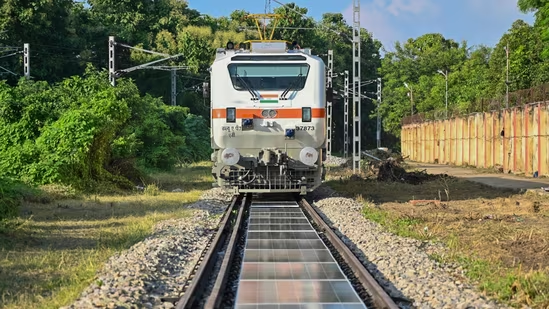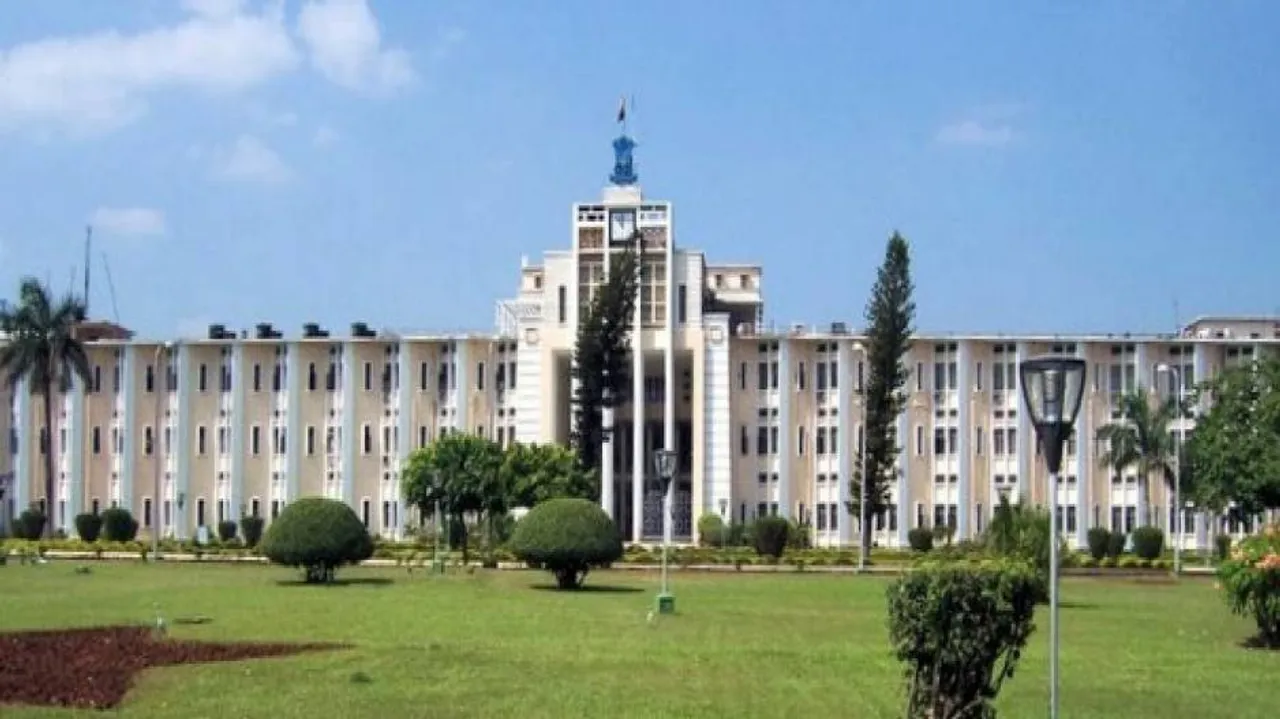Varanasi: In a major step towards sustainable rail transport, Banaras Locomotive Works (BLW), Varanasi, has installed India’s first removable solar panels between active railway tracks. The innovative project is part of Indian Railways’ renewable energy initiatives and marks a historic milestone in the use of green technology.
The system uses an indigenous installation technique that allows solar panels to be mounted between tracks without affecting train operations. Uniquely, the panels can be removed easily during track maintenance, ensuring safety and flexibility. Mounted on rubber pads and secured with epoxy adhesive, the panels are designed to withstand vibrations caused by passing trains.
According to BLW General Manager Naresh Pal Singh, the pilot installation covers a 70-metre track section with 28 solar panels, generating 67 units of electricity per day with a 15 kilowatt peak (KWP) capacity. The power density is 220 KWp per km, and the energy density is 880 units per km per day.
Each solar panel measures 2,278 mm x 1,133 mm, weighs 31.83 kg, and has a module efficiency of 21.31%. Equipped with 144 half-cut mono-crystalline PERC bifacial cells, an IP68 junction box, and a maximum system voltage of 1,500 V, the panels are designed for durability and efficiency.
Officials noted that if scaled across the 1.2 lakh km Indian Railways network, particularly in yard lines, the system could generate 3.21 lakh units of electricity annually per kilometre.
The Ministry of Railways, in a post on X, hailed the development as a “historic first”, reinforcing India’s commitment to renewable energy. BLW already operates rooftop solar plants, and this initiative will further strengthen its green energy portfolio.
This achievement comes alongside other recent developments in Indian Railways, including the launch of its first industrial salt-loaded rake from Sanosara to Dahej and the commissioning of the 2×25 kV electric traction system at the Nagda-Khachrod section—highlighting a simultaneous focus on clean energy, freight efficiency, and infrastructure modernisation.










